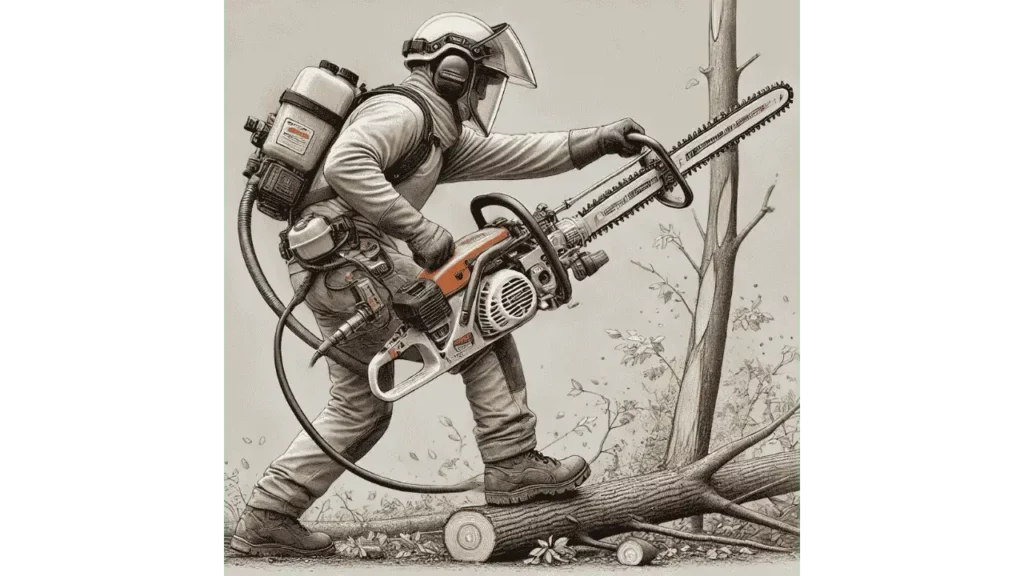A gas-powered pole saw is one of the most effective tools for trimming high branches and tackling tough cutting jobs. With its strong engine and extended reach, this tool is perfect for heavy-duty pruning. However, handling it properly is essential to ensure safety, efficiency, and the longevity of the saw. In this guide, you’ll learn how to operate a gas-powered pole saw correctly and maintain it for long-term use.

Getting Familiar with Your Gas-Powered Pole Saw
Before starting, it’s important to understand how your gas-powered pole saw works. Unlike electric models, this saw relies on a fuel-powered engine that drives the chain. Key components include the engine, throttle control, extension pole, and chainsaw head. Gas-powered pole saws are ideal for cutting thick branches and handling more demanding tasks than electric alternatives.
Safety Precautions Before Starting
Safety is the first priority when using a gas-powered pole saw. Wear protective gloves, safety glasses, a helmet, and ear protection, as these saws produce significant noise and vibrations. Inspect the area for potential hazards, such as unstable branches or overhead power lines. Make sure you have firm footing and are standing in a stable position before starting the saw.
Assembling and Fueling the Pole Saw
Assembling the saw correctly ensures smooth operation. Attach the chainsaw head securely to the extension pole, ensuring all parts are locked in place. Mix the correct ratio of fuel and oil as specified by the manufacturer, then fill the fuel tank carefully. Check that the chain is well-lubricated and properly tensioned before proceeding.
Starting and Controlling the Saw
To start the engine, set the choke to the correct position and prime the fuel system. Hold the saw firmly and pull the starter cord in a controlled motion. Once the engine is running, let it warm up for a few moments before engaging the throttle. Use both hands to maintain full control over the saw, keeping a steady grip on the pole.
Proper Cutting Techniques
Position yourself at a safe distance from the falling branch. Begin by making a small undercut on the underside of the branch; this prevents the bark from tearing. Then, move to the top and complete the cut with steady pressure, allowing the saw’s weight to assist with the cutting process. Avoid forcing the saw through the wood, as this can cause kickback and instability.
Turning Off and Cleaning the Saw
Once you’re finished cutting, release the throttle and allow the engine to idle before turning it off completely. Let the saw cool before cleaning it. Wipe off sawdust and sap from the chain and bar, and inspect the saw for any loose parts. Proper cleaning helps maintain peak performance and prevents damage.
Maintenance and Long-Term Care
Routine maintenance keeps your gas-powered pole saw in optimal condition. Drain excess fuel if the saw won’t be used for an extended period to prevent gumming in the engine. Sharpen the chain regularly to ensure efficient cutting. Store the saw in a dry, well-ventilated place to protect it from moisture and corrosion.
Conclusion
A gas-powered pole saw is a powerful tool that makes tree trimming easier and more efficient. By following the right safety measures, using proper cutting techniques, and maintaining the saw correctly, you can extend its lifespan and keep it performing at its best. With the right approach, you’ll get clean, precise cuts while working safely and effectively.
- How Many Watts Does a Pole Saw Use? - July 4, 2025
- How Long Is a Pole Saw? - July 3, 2025
- How Much Does a Pole Saw Cost? - July 2, 2025
